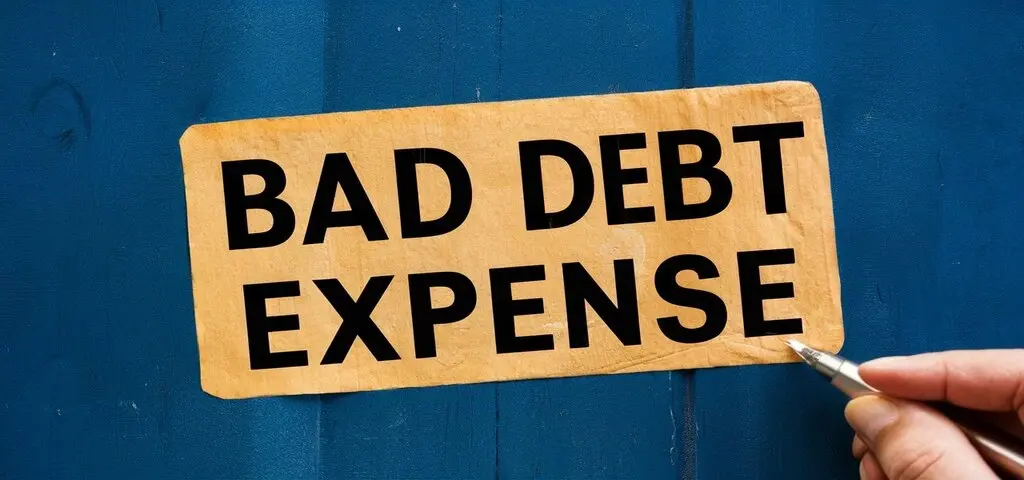
The short form of bad debt expense is BDE.
Accounts receivable written off or bad debt expense: this refers to the cost that a business company records in its income statement for accounts receivables that are believed to be uncollectible during a particular period.
In other words, it is the outstanding receivables that can be expected from customers in terms of accounts receivables that the company expects would not be recovered. It is common practice for companies to engage in sales credit to customers as a mode of operation, although the companies appreciate the fact that not all the customers will be able to pay them back. The latter is provided for in the bad debt expense estimate which covers such anticipated losses.
Although it would be ideal for every customer to pay on time as far as the agreed credit terms are concerned, it is impossible to expect that this is what is going to happen since some percentage of accounts receivable will remain uncoated. This is mainly because customers fail or do not pay their outstanding bills, or perhaps go bankrupt, or else are just so careless. Businesses find it important to estimate it in a bid to forecast such unavoidable losses.
The Significance of Accrual for Doubtful Accounts
Recording bad debt expenses is important for several reasons:
1. This one gives a more accurate impression of net income since it takes into account the effects of inflation. A company overstates its net income if it fails to include the proportion of the credit sales that will not likely be realized in the future. To adjust for special gains or losses, which is a concept similar to the allowance for doubtful accounts, the company subtracts from revenue the amount that was received. This means that financial statement users are provided with a better view of profitability.
2. It records expenses against revenues as in the matching principle. In contrast, accrual accounting recognizes revenue when sales are made regardless of when cash is received. The write-off of the bad debts ensures that expenses related to receivables are taken to the same period as the related revenue based on the matching concept.
3. It anticipates future write-offs. To provide for a future increase in doubtful debts, the bad debt expense provides a way to reserve cash for future write-offs that may occur when certain debts owed by customers are considered non-recoverable. In this way, the write-offs affect the net income to a lesser degree in the periods when these occur.
Ways Used in Costing Bad Debts
There are two primary methods to estimate and record bad debt expenses:
1. This is known as the Percentage of Sales Method
In this method, the amount of bad debt expense is calculated with the help of a fixed percentage of the net credit sales made during the respective period of the accounting period. For instance, if a company has regularly incurred $200,000 in bad debts out of $10m of net sales over a period in the past, then bad debt expense would be $200000 of current period net credit sales.
This method, though easy to apply, may not necessarily ensure a correct association of bad debts to credit sales. In most cases, uncollectible debt is an issue of general economic conditions and the ability of customers to pay their debts rather than total net sales.
2. Aging of Accounts Receivable: Analysis Method
This involves classifying customer receivables that have not been paid through age categories to be in a position to identify which of them are more likely to be bad debts. In their turn, companies make their forecasts on the expected proportion of different aged accounts that will likely turn out to be uncollectible in the upcoming period based on historical data and trends.
For instance, if a company discovers that accounts older than 120 days have a 50% chance of being bad in the future, the company will apply this by age of accounts percentage to determine the bad debts expenses for the future period. This leads to a more accurate estimation as compared to the fixed percentage approach to sales that has been used so far.
Calculating Bad Debt Expenses
Under the percentage of sales method:
Bad debt expense = net credit sales x estimated uncollectible percentage
So for example, if a company has $1 million in net credit sales for the year and knows 2% of sales are historically uncollectible, bad debt expense would be:
It has been calculated as Bad Debt Expense = $1,000,000 x 2% = $20,000.
Under the accounts receivable aging method:
1. based on days outstanding, it is possible to set accounts receivable age categories, for example, 0-30 days, 31-60 days, etc.
2. Estimate the proportion of each age level that has been uncollectible throughout its history
3. Performs, the accounts receivable balance by historical non-collection percentage to the current period ending for each age category
4. Add up the amounts obtained in step 3 and arrive at total bad debt expense for the accounting period.
Recording Bad Debts
In external financial reporting, which involves the preparation of the income statement, the bad debt expense decreases through the income statement while the allowance for doubtful accounts balance in the balance sheet also decreases. The allowance account gradually builds up the amount of unpaid and doubtful debts estimated periodically until actual write-offs of customer debts occur, which directly offsets the allowance account.
In conclusion, recognizing bad debt expense is a standard accounting process to prepare for the uncollectible amount that arises due to the possibility that some customers may not be able to settle their debts. It can be seen that applying the right method of calculation is significant in presenting accurate net income figures to the financial statement users.
Contact us here for accounting services now!

Get Help Fast!
My Accounts Consultant Helps Accounting & Bookkeeping Services help you save money, better understand your business and find the Accounts problems before they hurt you.